2 $\begingroup$ I can prove that $x^3y^3 = (xy)(x^2xyy^2)$ by expanding the right side $x^3y^3 = (xy)x^2 (xy)(xy) (xy)y^2$ $\implies x^3 x^2y x^2y xy^2 xy^2 y^3$ $\implies x^3 y^3$ I was wondering what are other ways to prove that $x^3y^3 = (xy)(x^2xyy^2)$Graph y=x^23 y = x2 − 3 y = x 2 3 Find the properties of the given parabola Tap for more steps Rewrite the equation in vertex form Tap for more steps Complete the square for x 2 − 3 x 2 3 Tap for more steps Use the form a x 2 b x cX3 − x2y − xy2 y3 x 3 x 2 y x y 2 y 3 Factor out the greatest common factor from each group Tap for more steps Group the first two terms and the last two terms ( x 3 − x 2 y) − x y 2 y 3 ( x 3 x 2 y) x y 2 y 3 Factor out the greatest common factor ( GCF) from each group
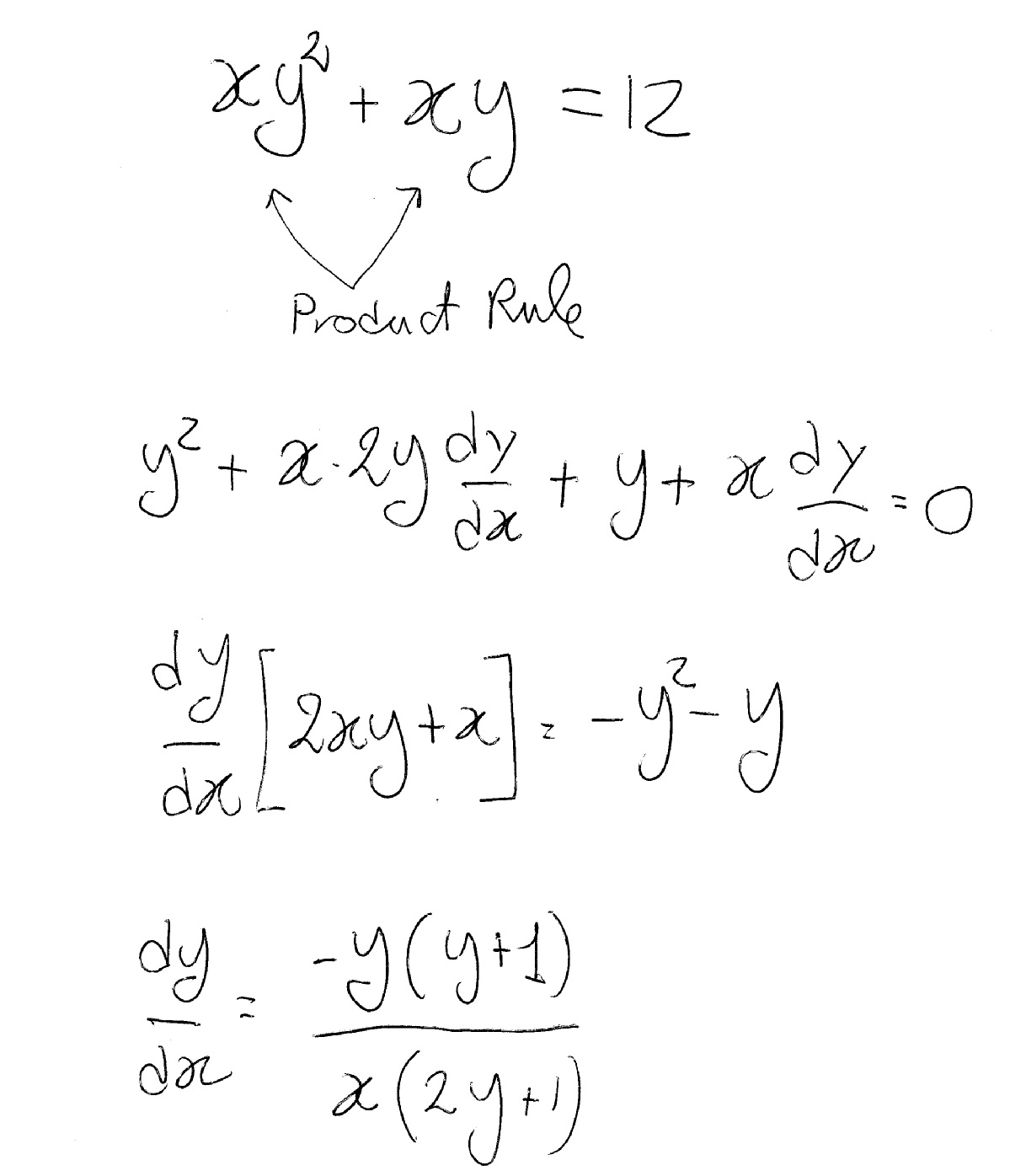
How Do You Differentiate Xy 2 Xy 12 Socratic
X 3 y 3 x y x 2xy y 2
X 3 y 3 x y x 2xy y 2-Get stepbystep solutions from expert tutors as fast as 1530 minutes Your first 5 questions are on us!Factor x^3xy^2x^2yy^3 x3 − xy2 x2y − y3 x 3 x y 2 x 2 y y 3 Factor out the greatest common factor from each group Tap for more steps Group the first two terms and the last two terms ( x 3 − x y 2) x 2 y − y 3 ( x 3 x y 2) x 2 y y 3 Factor out the greatest common factor ( GCF) from each group
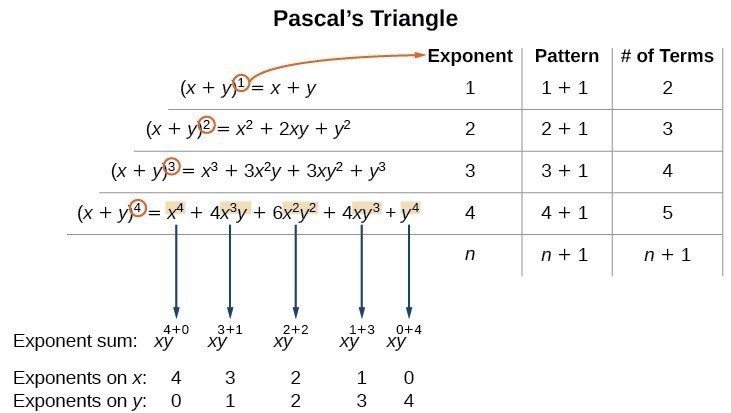



Using The Binomial Theorem College Algebra
X 3 y 3 = ( x y) ( x 2 − x y y 2) Use the distributive property to multiply xy by x^ {2}xyy^ {2} and combine like terms Use the distributive property to multiply x y by x 2 − x y y 2 and combine like terms x^ {3}y^ {3}=x^ {3}y^ {3} x 3 ySimple and best practice solution for x/y=2/3 equation Check how easy it is, and learn it for the future Our solution is simple, and easy to understand, Transcript Example 17 Solve the pair of equations 2/𝑥 3/𝑦=13 5/𝑥−4/𝑦=−2 2/𝑥 3/𝑦=13 5/𝑥−4/𝑦=−2 So, our equations become 2u 3v = 13 5u – 4v = –2 Hence, our equations are 2u 3v = 13 (3) 5u – 4v = – 2 (4) From (3) 2u 3v = 13 2u = 13 – 3V u = (13 − 3𝑣)/2 Putting value of u (4) 5u – 4v = 2 5((13 − 3𝑣)/2)−4𝑣=−2 Multiplying
If x 3 y 3 3axy = 0, then dy/dx equals If x x y y z z = c, then ∂z/∂x = If X1 X2 X3 As Well As Y1 Y2 Y3 Are In Gp With The Same Common Ratio Then The Points X1 Y1 X2 Y2 And X3 Y3 If Cos Pi By 2n Then X1 X2 X3 Infinity Equal If Xy Xe X Y 6 Then Dy Dx If y (x) is solution of x(dy/dx) 2y = x 2, y(1) = 1, then value of y(1/2)0 votes 1 answer Prove that the curves x = y^2 and xy = k intersect at right angles if 8k^2 =1 asked in Mathematics by Nisa (598k points)The normal to the ellipse at the point (x,y,z) is \nabla(x^2y^24z^2) = (2x, 2y, 8z) At minimum or maximum distance to the plane, This is easy if you don't insist on using Lagrange multipliers The normal to the ellipse at the point (x, y, z) is
Simplify (xy)(x^2xyy^2) Expand by multiplying each term in the first expression by each term in the second expression Simplify terms Tap for more steps Simplify each term Tap for more steps Multiply by by adding the exponents Tap for more steps Multiply byGet stepbystep solutions from expert tutors as fast as 1530 minutes Your first 5 questions are on us!Piece of cake Unlock StepbyStep Natural Language



1
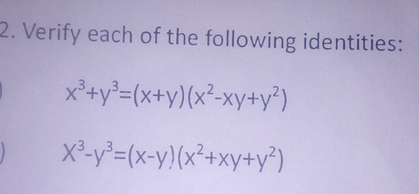



2 Verify Each Of The Following Identities X3 Y3 X Y X2 X Scholr
Factor x^3y^3 x3 − y3 x 3 y 3 Since both terms are perfect cubes, factor using the difference of cubes formula, a3 −b3 = (a−b)(a2 abb2) a 3 b 3 = ( a b) ( a 2 a b b 2) where a = x a = x and b = y b = y (x−y)(x2 xyy2) ( x y) ( x 2 x y y 2)Why does x y x y 2 x y 3 ⋯ = x y − 1?Piece of cake Unlock StepbyStep Natural Language
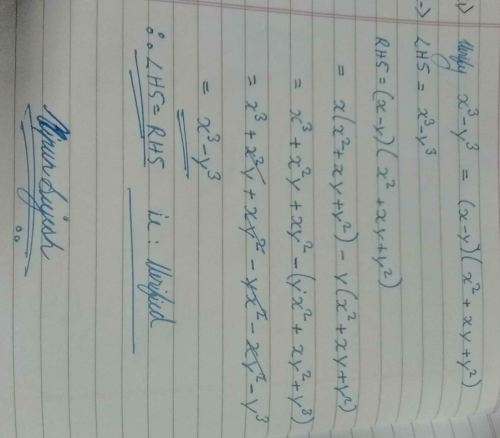



Verify X 3 Y 3 X Y X 2 Y 2 Xy Edurev Class 9 Question




If X Y 3 And Xy 2 Then The Value Of X 3 Y 3 Is Equal To Brainly In
Plot x^2 y^3, x=11, y=03 Natural Language;3x(x 2 2x – 5) Content Continues Below Factor 26 x sqrt9 y 3 – 13 y sqrt4 x 2 y xy sqrt169 x 4 y 3 , assuming that all variables are nonnegativeSince you are in high school, allow me to write an answer that is the an expanded version of the other answer, but perhaps, one that is written in a way that is more accessible to you
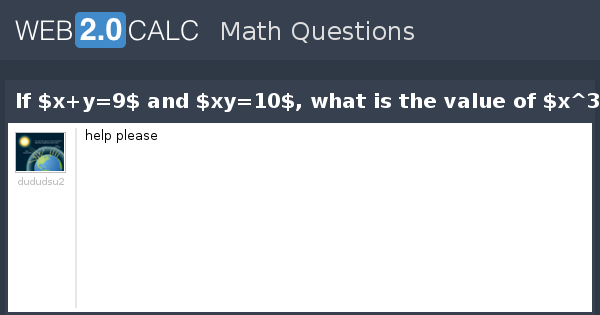



View Question If X Y 9 And Xy 10 What Is The Value Of X 3 Y 3




Solve Y 2 2x 2y Dx 2x 3 Xy Dy 0 Mathematics Stack Exchange
2x35x2yxy26y3 Final result 2x3 5x2y xy2 6y3 Step by step solution Step 1 Equation at the end of step 1 (((2•(x3))((5•(x2))•y))(x•(y2)))(2Solution for xy2xy=3 equation Simplifying x y 2xy = 3 Reorder the terms x 2xy y = 3 Solving x 2xy y = 3 Solving for variable 'x' Move all terms containing x to the left, all other terms to the right Ex 57, 13 If 𝑦=3 cos〖 (log〖𝑥)4 〖 sin〗〖 (log〖𝑥 )〗 〗 〗 〗, show that 𝑥2 𝑦2 𝑥𝑦1 𝑦 = 0 𝑦=3 cos〖 (log




Verify X3 Y3 X Y X2 Xy Y2 Brainly In



Solved Solve Yz 2 X 2 Yz Dx Zx 2 Y 2 Xz Dy Xy 2 Z 2 Xy Dz 0 Subject Differential Equation And Integral Equation Course Hero
Ex 25, 9Verify (i) x3 y3 = (x y) (x2 – xy y2)LHS x3 y3We know (x y)3 = x3 y3 3xy (x y)So, x3 y3 = (x y)3 – 3xy (x y) = (x y)3 – 3xyX^3 x^2 y x y^2 y^3 WolframAlpha Volume of a cylinder?1) Factor by grouping x^3 y^3 x^2y xy^2 = (x^3 y^3) (x^2y xy^2) The first is a sum of cubes (x y) (x^2 xy y^2) xy (x y) They both have an x y in common (x y) (x^2 xy y^2) (xy)




Newton Diagram For 2x 5 X 3 Y 2 Xy 2 3y 5 Showing The Line M N Download Scientific Diagram




Ex 3 2 7 I Class 12 Matrices Find X And Y If X Y And X
Answer by You can put this solution on YOUR website!Find the condition that the curves 2x = y^2 and 2xy = k intersect orthogonally asked in Mathematics by AsutoshSahni (527k points) application of derivative;Compute answers using Wolfram's breakthrough technology & knowledgebase, relied on by millions of students & professionals For math, science, nutrition, history
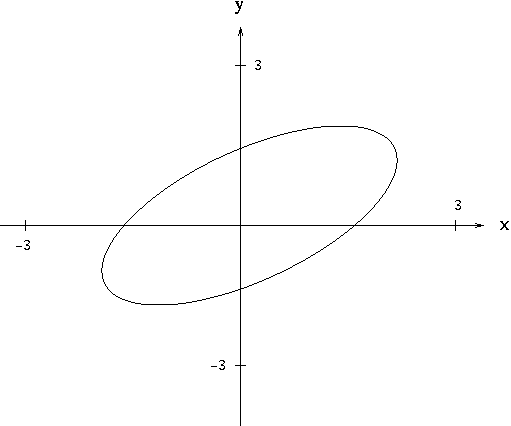



Implicit Differentiation




Ex 5 3 6 Find Dy Dx In X3 X2y Xy2 Y3 81 Cbse
Well, working backwards from (xy)(xy) you get x(xy)y(xy)=x 2xyxyy 2 For the difference of two cubes, x 3y 3 =(xy)(x 2 xyy 2) so again working backwards you get x(x 2 xyy 2)y(x 2 xyy 2) expanding, x 3 x 2 yxy 2x 2 yxy 2y 3 Transcript Ex 53, 6 Find 𝑑𝑦/𝑑𝑥 in, 𝑥3 𝑥2𝑦 𝑥𝑦2 𝑦3 = 81 𝑥3 𝑥2𝑦 𝑥𝑦2 𝑦3 = 81 Differentiating both sides 𝑤𝑟𝑡𝑥On the other hand, Mathematica gives an explicit solution for the original differential equation $$ y(x)=\frac{e^{3 x}}{96 \sqrt{(x6)^2}} $$ $$\begin{multline}\Biggl(\sqrt{2 \pi } c_2 \left(x^636 x^5519 x^ x^ x^ x\right)(x6)^2 \text{erfi}\left(\frac{\sqrt{(x6)^2}}{\sqrt{2}}\right)\\ 2 \sqrt{(x6)^2} \left(384




Verify X3 Y3 X Y X2 Xy Y2 Verify X3 Y3 X Y X2 Xy Y2 Class 9th Exercise 2 5 Question 9 Youtube




Verify X3 Y3 X Y X2 Xy Y2 Brainly In
Extended Keyboard Examples Upload Random Compute answers using Wolfram's breakthrough technology & knowledgebase, relied on by millions of students & professionals For math, science, nutrition, history, geography, engineering, mathematics, linguistics, sports, finance, music If √x √y = 5, then dy/dx at (4,9) is (a) 2/3 (b) 3/2 (c) 3/2 (d) 2/3 asked in Mathematics by KumariMuskan ( 339k points) bseb model setSimple and best practice solution for (3x^2y2xyy^3)dx(x^2y^2)dy=0 equation Check how easy it is, and learn it for the future Our solution is simple, and easy to understand, so don`t hesitate to use it as a solution of your homework



Show That X 4 Y 3 X2 16 Xy 12 Y2 9 X3 64 Y2 27 Hence Find The Value If X 3 Y 1 Mathematics Topperlearning Com 8446




Consider The Function F X Y X 2 2xy 3y 2 8y A Find The Critical Points Of F And Classify Each Critical Point As Homeworklib
About Press Copyright Contact us Creators Advertise Developers Terms Privacy Policy & Safety How works Test new features Press Copyright Contact us CreatorsSOLUTION 1 Begin with x 3 y 3 = 4 Differentiate both sides of the equation, getting D ( x 3 y 3) = D ( 4 ) , D ( x 3) D ( y 3) = D ( 4 ) , (Remember to use the chain rule on D ( y 3) ) 3x 2 3y 2 y' = 0 , so that (Now solve for y' ) 3y 2 y' = 3x 2, and Click HERE to return to the list of problems SOLUTION 2 Begin with (xy) 2 = x y 1 Differentiate both sides Here, by the Chain Rule, d/dx(y^3)=d/dy(y^3)*dy/dx=3y^2*dy/dx, &, by, the Product Rule, d/dx(xy)=x*d/dx(y)y*d/dx(x)=xdy/dxy*1 Therefore, 3x^23y^2dy/dx=2(xdy/dxy) (3y^22x)dy/dx=2y3x^2 dy/dx=(2y3x^2)/(3y^22x)




Solved If X 3 2 3 2 Y 3 2 3 2 Then Find The Value Of X 2 Xy Y 2



X Y 2
43 x2 2xy y2 is a perfect square It factors into (xy)• (xy) which is another way of writing (xy)2 How to recognize a perfect square trinomial • It has three terms • Two of its terms are perfect squares themselves • The remaining term is twice theSolve 2xy/ X Y = 3/2 Xy/ 2x Y = 3/10 X Y ≠ 0 and 2x Y ≠ 0 CISCE ICSE Class 9 Question Papers 10 Textbook Solutions Important Solutions 6 Question Bank Solutions 144 Concept Notes & Videos 414 Syllabus Advertisement Remove all ads Solve 2xy/ X Y = 3/2 Xy/ 2x Y = 3/10 X Y ≠ 0 and 2x Y ≠ 0Y=2^x WolframAlpha Volume of a cylinder?



Double Integrals Over General Regions Calculus Volume 3



Magistrat Plus Mademoiselle X 3 Y 3 Grand Moelle Osseuse Soudain
You can put this solution on YOUR website!Use implicit differentiation to find the largest yvalue in the loop of the Folium of Descartes, which is given by x3 y3 − 3xy = 0 First, we do the implicit derivative to simplify our equation Because maxima/minima occur when f' (x)=0, we take the implicit derivative and set it equal to 0(xyz)^3 (x y z) (x y z) (x y z) We multiply using the FOIL Method x * x = x^2 x * y = xy x * z = xz y * x = xy




If Generators X Y Satisfy The Relation Xy 2 Y 3x Yx 2 X 3y Then The Group Is Trivial Problems In Mathematics
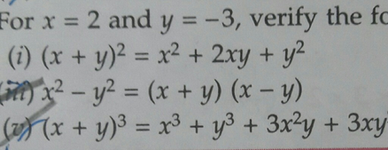



For X 2 And Y 3 Verify The Fo I X Y X2 2xy Y Y2 Scholr
Z = x 2 3 xy y 2 2 z = x y 2 − y x 2 3 z = sin 3 x cos 4 y 4 z = arctan (y x) 5 z = 2 x 2 − 5 xy y 2 6 z = xy x − y 7 z = xsin y ycos x 8 z = (x y) 3 9 z = x y x − y 10 z = e y Inx Total Differential We define the total differential dz as function z = f (x, y) by dz = ∂z ∂ x dx ∂z ∂ y dy A function of more x^3 x^2y y^3 xy^2=(xy)(x^2y^2) x^3 x^2y y^3 xy^2 = y^3((x/y)^3(x/y)^2(x/y)1) but z^3z^2z1 =0 has a root z = 1 making z^3z^2z1 = (z1)(b z^2c z d) equating the coefficients we find { (d1 = 0), (c d 1= 0),( b c 1= 0), (1 b = 0) } solving for b,c,d (b=1,c=0,d=1) so z^3z^2z1 = (z1)(z^2 1) and finally x^3 x^2y y^3 xy^2=(x1 {x2 y2 2x 2y = (x 2)(y 2) ( x y 2)2 ( y x 2)2 = 1 2 {x2 − 2xy − 6 = 6y 2x 3x2 y 1 = 4 − x 3 {x2 − y = y2 − x x2 − x = y 3 4 { x y 1 x 1 y = 9 2 xy 1 xy x y y x = 5 6 {x3(x − y) x2y2 = 1 x2(xy 3) − 3xy = 3 7 { x2 3y − 6x = 0 9x2 − 6xy2 y4 − 3y 9 = 0



Verify X 3 Y 3 X Y X 2 Xy Y 2 Sarthaks Econnect Largest Online Education Community
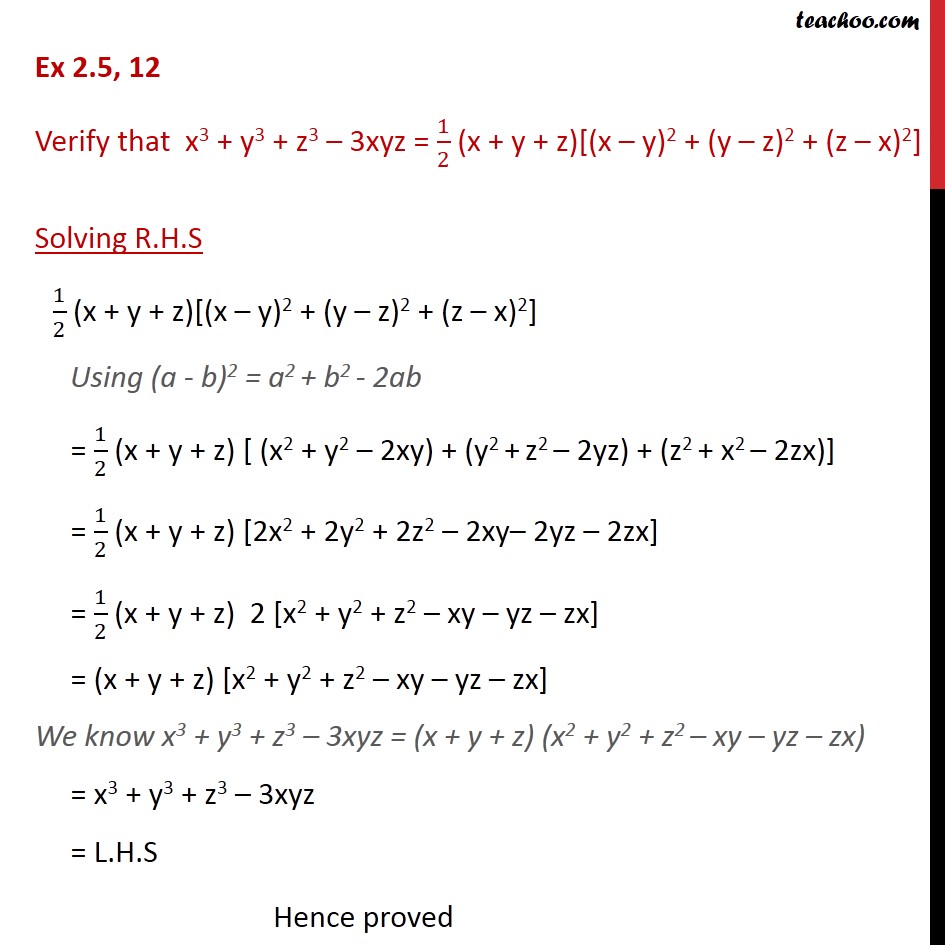



Ex 2 5 12 Verify That X3 Y3 Z3 3xyz 1 2 Ex 2 5
Solve your math problems using our free math solver with stepbystep solutions Our math solver supports basic math, prealgebra, algebra, trigonometry, calculus and moreWe think you wrote (x^3y^3)/(x^23xy2y^2)•(x^2xy6y^2)/(x^22xy3y^2)÷(x^2xyy^2)/(2x^22xy) This deals with factoring binomials as the sum or difference ofThe graph of mathx^2(y\sqrt3{x^2})^2=1/math is very interesting and is show below using desmos




Find The Asymptotes Of The Following Curves Y 3 3x 2y X Y 2 3x 3 2y 2 2x Y 4x 5y 6 0 Youtube




Discuss The Maxima And Minima Of The Function U X 3y 2 1 X Y Answer Mathematics 1 Question Answer Collection
Y=x^2 3 This is an equation of a parabola y=ax^2bxc Here a=1 b=0 c=3 a=1>0 the parabola opens upwards The coordinates of the minimum point are x=b/2a = 0/2 =0 y(0)=0^23 y = 3 we need 2 more points to draw the parabola x=1 y=4 x=1 y = 4 Join the tree points together and you see the parabola y=3x This is the equation of a line thatMath Input NEW Use textbook math notation to enter your math Try it




Verify X3 Y3 X Y X2 Y2 Xy Brainly In




If X 7 3 Y 2 3 X Y 3 Then Show That Dy Dx Y X Maths Differential Equations Meritnation Com



Find Dy Dx X 3 X 2 Y Xy 2 Y 3 81 Sarthaks Econnect Largest Online Education Community




How To Show That Limit Of X 3 Y 3 X Y Does Not Exist At Origin Mathematics Stack Exchange




If X 2 Y 3 X 3y 2 Then Dy Dx Youtube
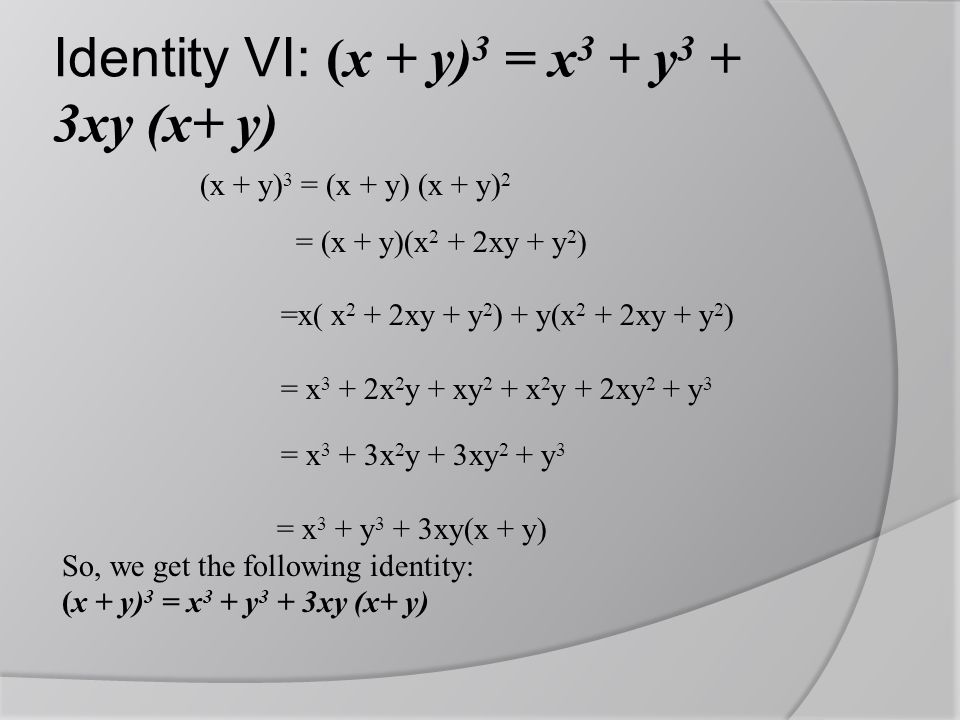



Polynomials Ppt Video Online Download




Verify The Following I X 3 Y 3 X Y X 2 Xy Y 2 Ii X 3 Y 3 X Y X 2 Xy Y 2




Verify I X 3 Y 3 X Y X 2 X Y Y 2 Ii X 3 Y 3 X Y X 2 X Y Y 2




Y Xy 3 1 X 2 1 2 Y 0 1 Harushley



1
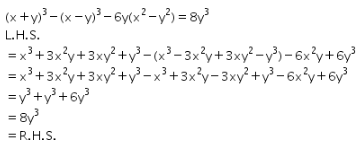



Prove That X Y 3 X Y 3 6y X2 Y2 8y3 Cbse Class 9 Maths Learn Cbse Forum




Solved Verify I X 3 Y 3 X Y X 2 Xy Y 2 Ii X 3 Y 3 X Y X 2 Xy Y 2
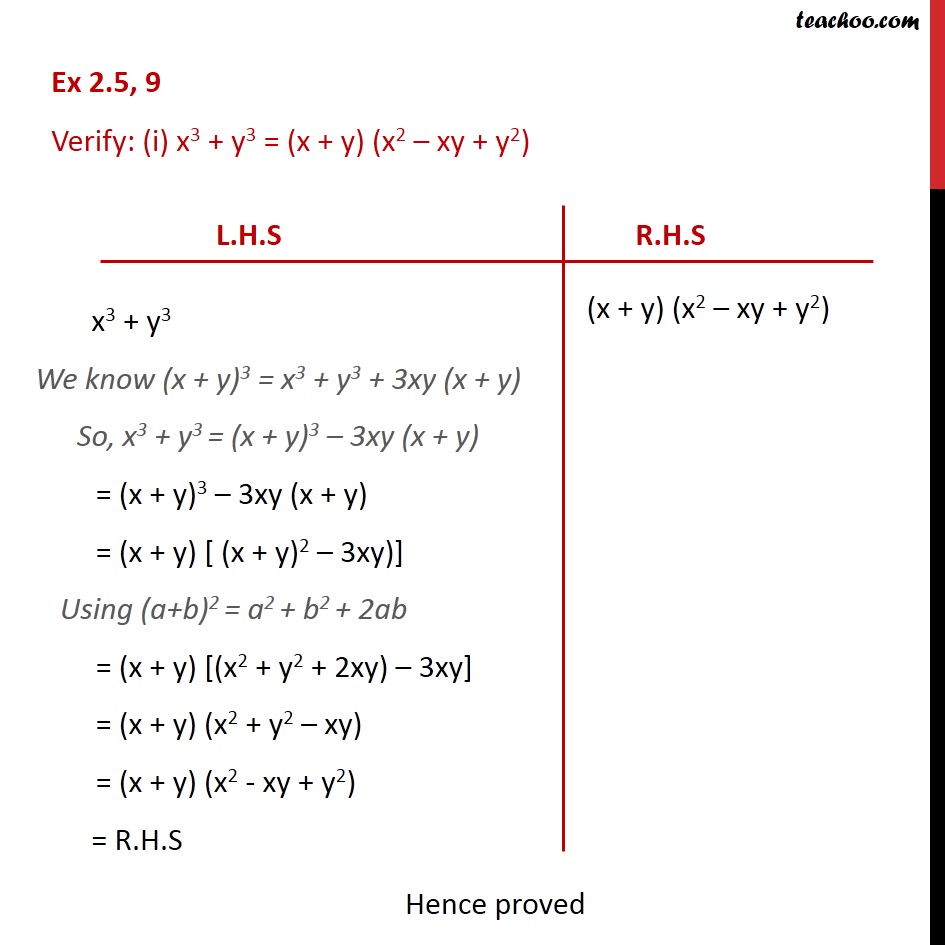



Ex 2 5 9 Verify I X 3 Y 3 X Y X 2 Xy Y 2 Teachoo



Www Tau Ac Il Levant Ode Solution 6 Pdf



How To Factor X 3 X 2 Xy X Y 1 Quora




Verify I X 3 Y 3 X Y X 2 X Y Y 2 Ii X 3 Y 3 X Y X 2 X Y Y 2




The Factors Of X 3 X 2y X Y 2 Y 3 Are A X Y X 2 X Y Y 2 B X Y X 2 X Y Y 2 C X Y 2 X Y D X Y 2 X Y



Www3 Nd Edu Taylor Math550 Images Oldexams Exam2a Pdf




Class 9 Polynomial 2 Coordinate Geometry Linear Equation In Two Variables Euclid S Geometry Lines And Angles Notes



How To Factorise 3 X Y 2 2 X Y Quora




Q62 If X3 Y3 X2 Xy Y2 5 1 And X2 Y2 X Y 7 1 Then The Ratio 2x 3y Equals Youtube




Factoring And The Factor Theorem Hints To Determine Each Type Ppt Download
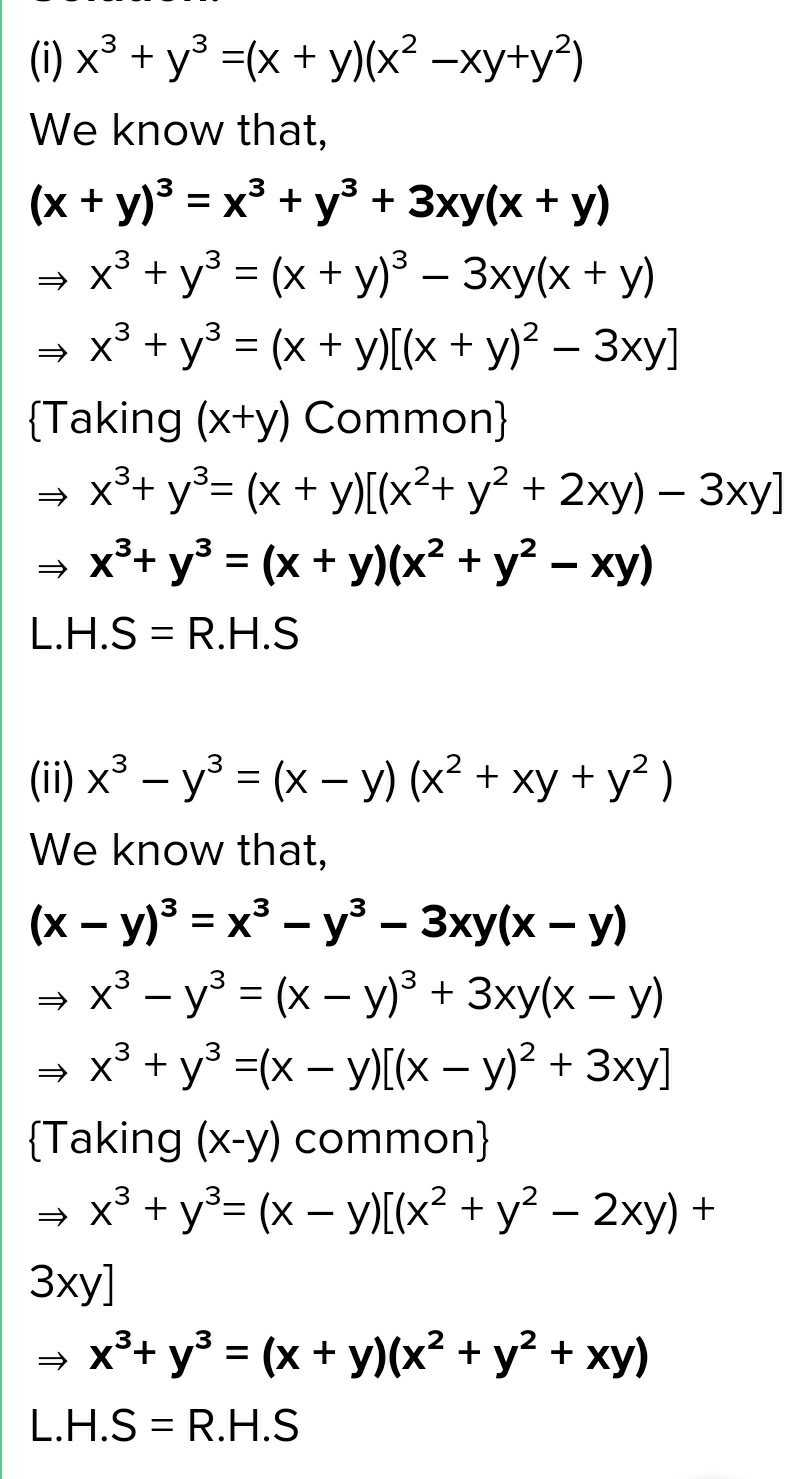



9 Verify I X3 Y3 X Y X2 Xy Y Ii P X Y X2 Xy Scholr
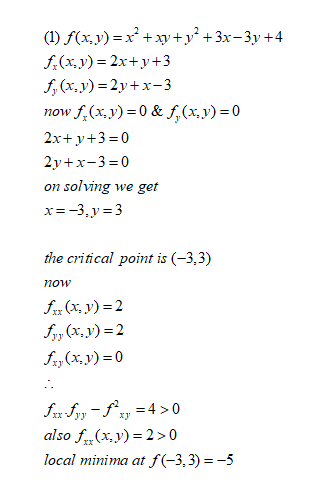



Answered Find All The Local Maxima Local Bartleby




F X Y X 2 Y Y Y F F X X 2xyx 2 3y Y Ln2 Z F X Y Cos Xy X Cos 2




Using The Binomial Theorem College Algebra




Y Xy 3 1 X 2 1 2 Y 0 1 Harushley



2 Y 3 Y 4 Buy Clothes Shoes Online
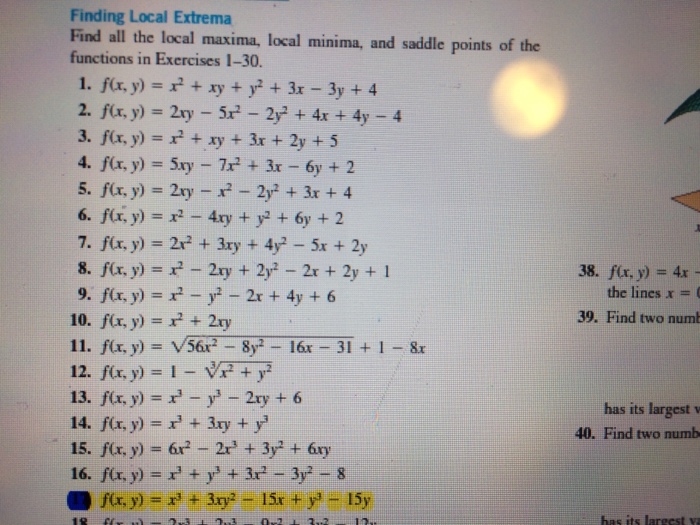



Find All The Local Maxima Local Minima And Saddle Chegg Com




Consider The Function F X Y Ln X 2 Y 2 3 Compute The Partial Derivatives Of The First And Second Order Mathematics Stack Exchange




Exact Equations Example 3 Video Khan Academy
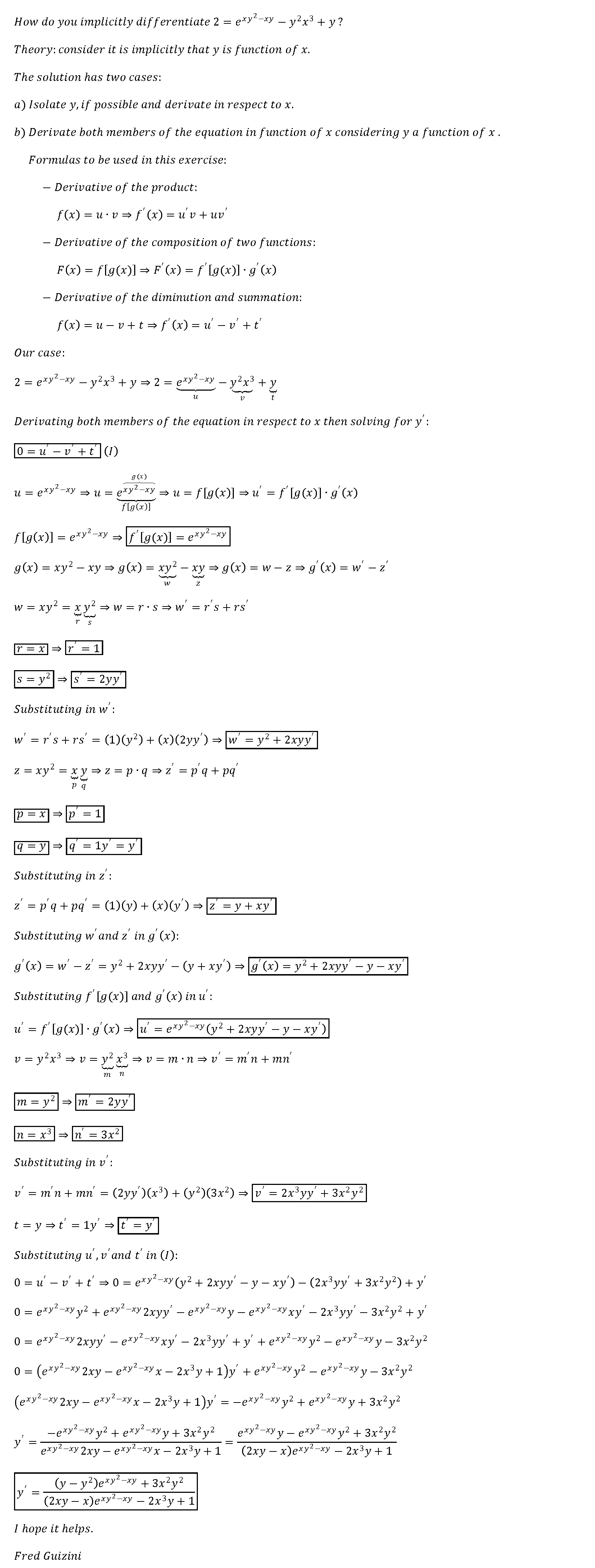



How Do You Implicitly Differentiate 2 E Xy 2 Xy Y 2x 3 Y Socratic
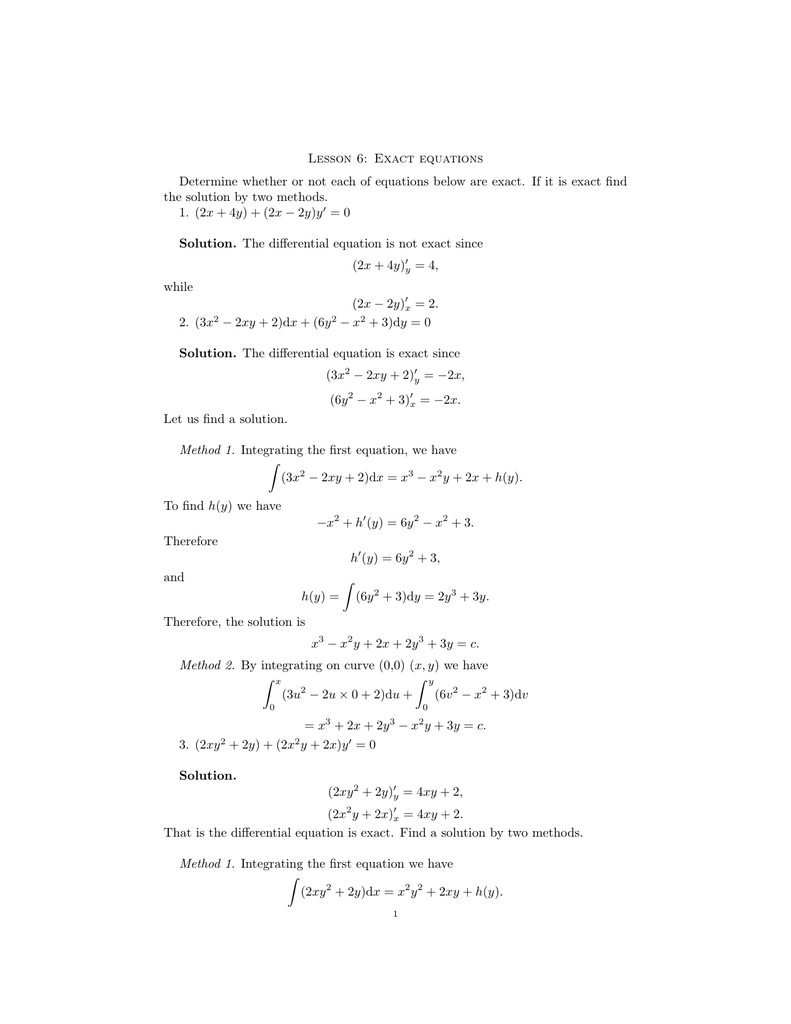



Lesson 6 Exact Equations Determine Whether Or Not Each Of




13 7 Extreme Values And Saddle Points Mathematics Libretexts




The Factors Of X 3 X 2y X Y 2 Y 3 Are A X Y X 2 X Y Y 2 B X Y X 2 X Y Y 2 C Youtube




If X 3 2 3 2 Y 3 2 3 2 Find The Value Of X 2 Y 2 Xy Mathematics Topperlearning Com 9dqpqijj



1




Worked Example Implicit Differentiation Video Khan Academy




Verify I X3 Y3 X Y X2 Xy Y2 Ii X3 Y3 X Y X2 Xy Y2 Brainly In




A Picture Of The Function F X Y X 3y Xy 3 X 2 Chegg Com
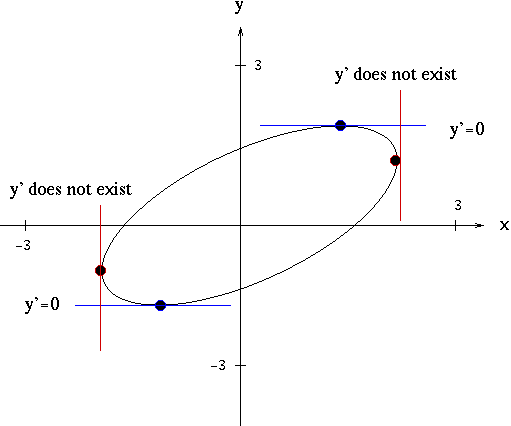



Solutions To Implicit Differentiation Problems
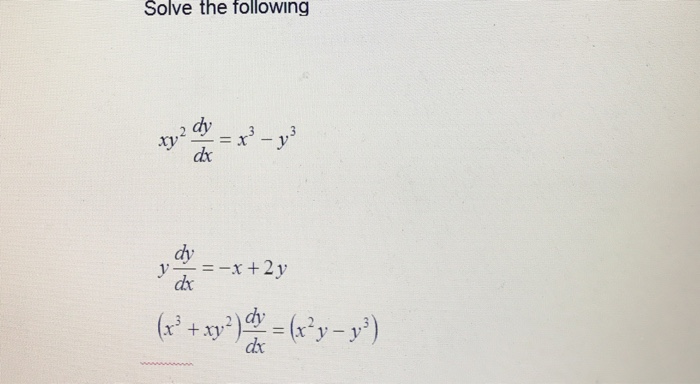



Solve The Following Xy 2 Dy Dx X 3 Y 3 Y Dy Dx Chegg Com



If Math X Y 2 Math And Math X 3 Y 3 Math What Is Math X 2 Y 2 Math Quora



How To Prove X 2 Y 2 Xy If X Y X Y Quora




If 2 X 3 Y 12 Z Then Prove That Xy Z X 2y Mathematics Topperlearning Com 8v1liiww




Now Verify X3 Y3 X2 Xy Y2 According To The Below Given Steps Please Please Please Please Please Experts Answer Fast Maths Linear Equations In Two Variables Meritnation Com



Www3 Nd Edu Zxu2 Triple Int16 8 Pdf




X 4 Y 3 Xy 2 X 2 Xy 2x 3y 2 0 Download Scientific Diagram




Najdite Znachenie Vyrazheniya X Y X 2 Xy Y 2 3xy X 3 Y 3 1 X Y Pri X 2 1 Y 0 Shkolnye Znaniya Com




How Do You Differentiate Xy 2 Xy 12 Socratic
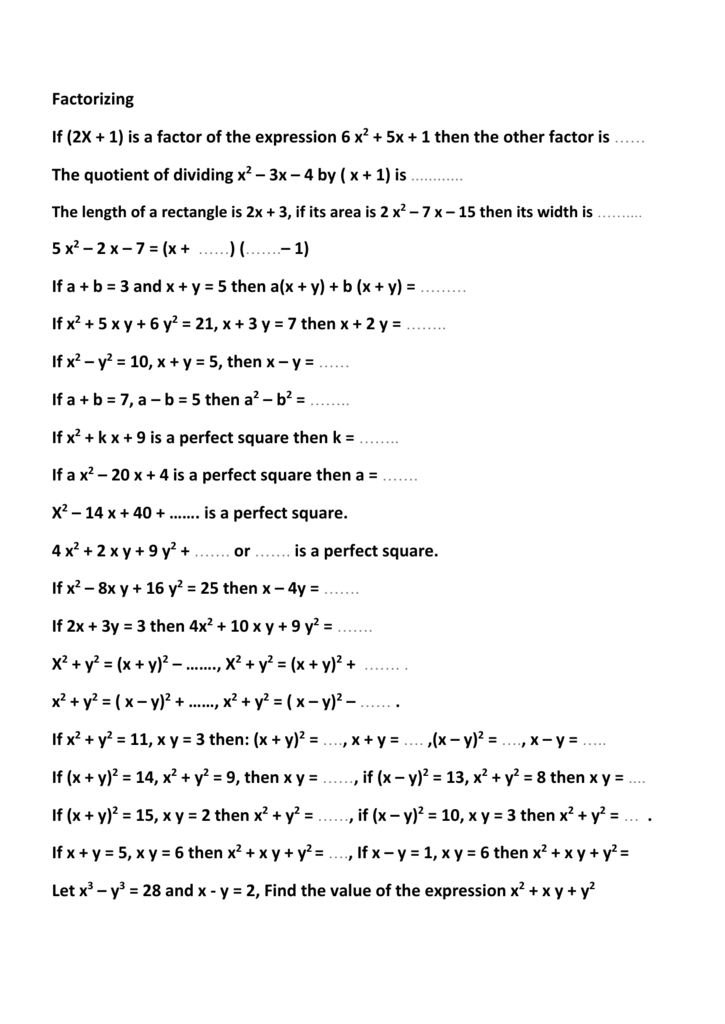



Factorizing If 2x 1 Is A Factor Of The Expression 6 X2 5x




Reshit Sistemu Uravnenij X 2 Y 2 3 X 3 Y 3 7 X Y Shkolnye Znaniya Com




Ex 9 4 3 Vi Simplify X Y X 2 Xy Y 2 Chapter 9 Class 8



If X Y 2 Then What Is The Value Of X Y 6xy Quora




Differential Calculus Concepts Problems 126 Rd 1 Matrix



Find The Sum Of The Geometric Series Sequences And Series Maths Class 11




Discuss The Maxima And Minima Of The Function U X 3y 2 1 X Y Answer Mathematics 1 Question Answer Collection
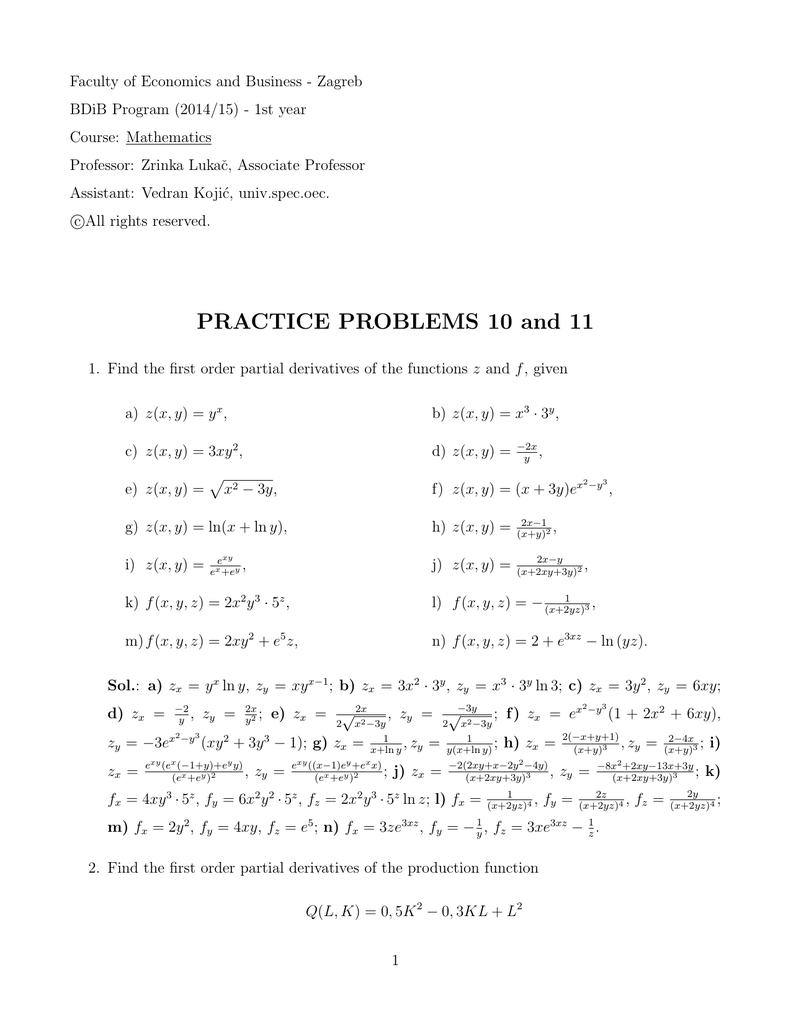



Practice Problems 10 And 11




Verify I X3 Y3 X Y X2 Xy Y2 Brainly In




If X 2 Y 2 49 And X Y 3 Then Find The Value Of X 3 Y 3
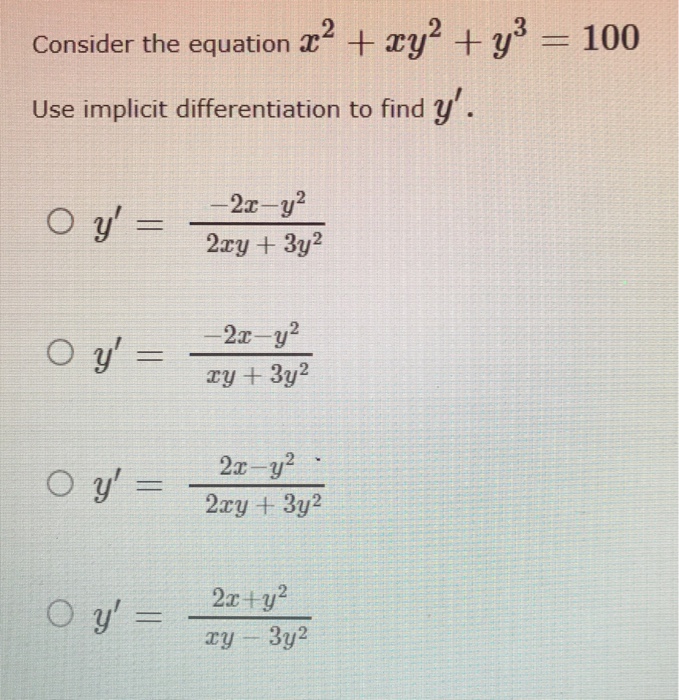



Consider The Equation X 2 Xy 2 Y 3 100 Use Chegg Com




Solve Xy 3 Y Dx 2 X 2y 2 X Y 4 Dy 0 Youtube




Simplify X Y 3 X Y 3 6y X 2 Y 2



The Factors Of X 3 X 2 Y Xy 2 Y 3 Are A X Y X 2 Xy Y 2 Sarthaks Econnect Largest Online Education Community
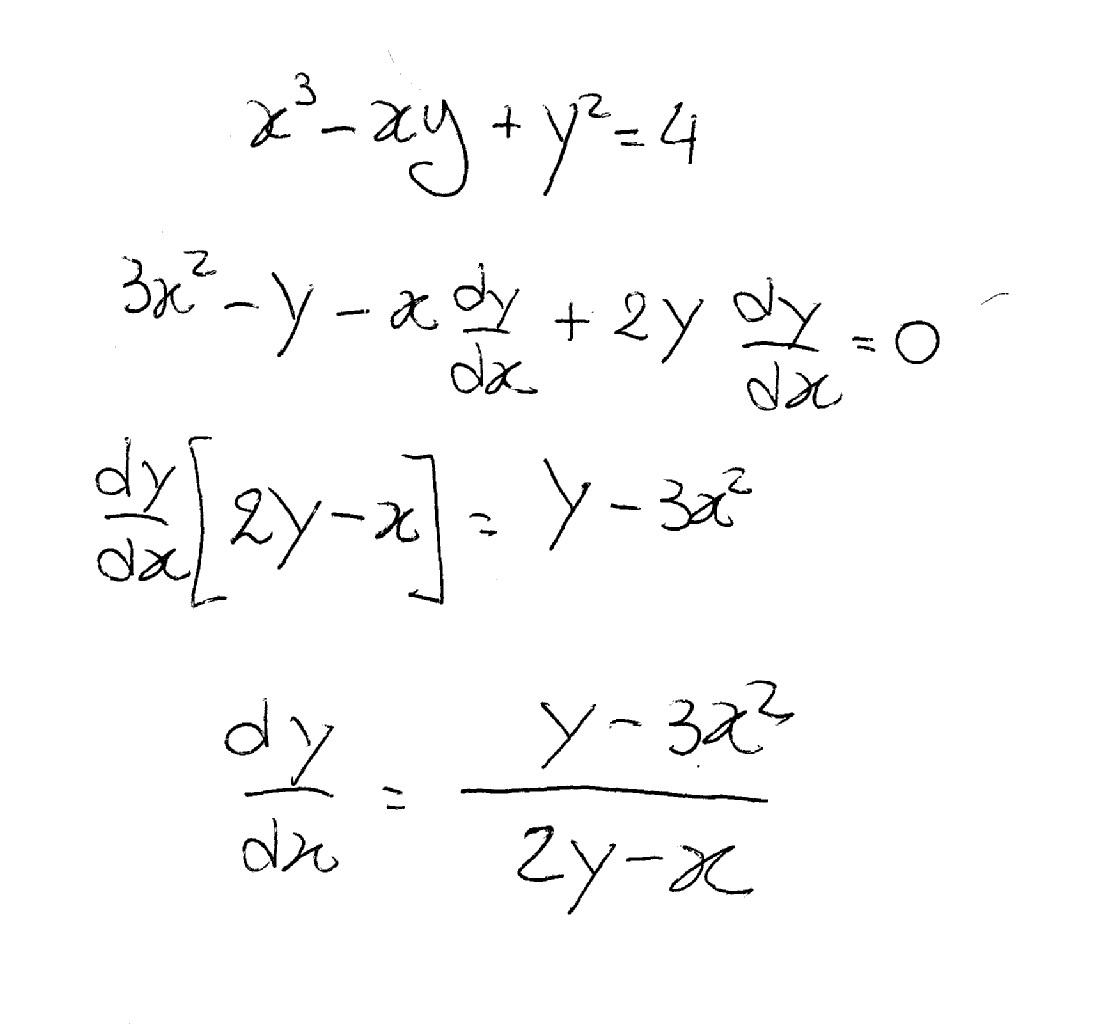



How Do You Differentiate X 3 Xy Y 2 4 Socratic




Verify X3 Y3 X Y X2 Y2 Xy Hence Factorise 216x3 125y3 Maths Polynomials Meritnation Com
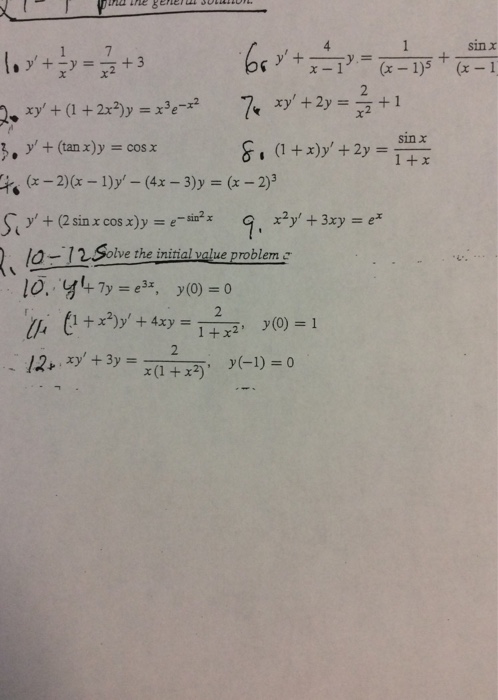



Y 1 X Y 7 X 2 3 Xy 1 2x 2 Y X 3 Chegg Com




Solved Find X 3 Y 3 If X Y 4 And Xy 5
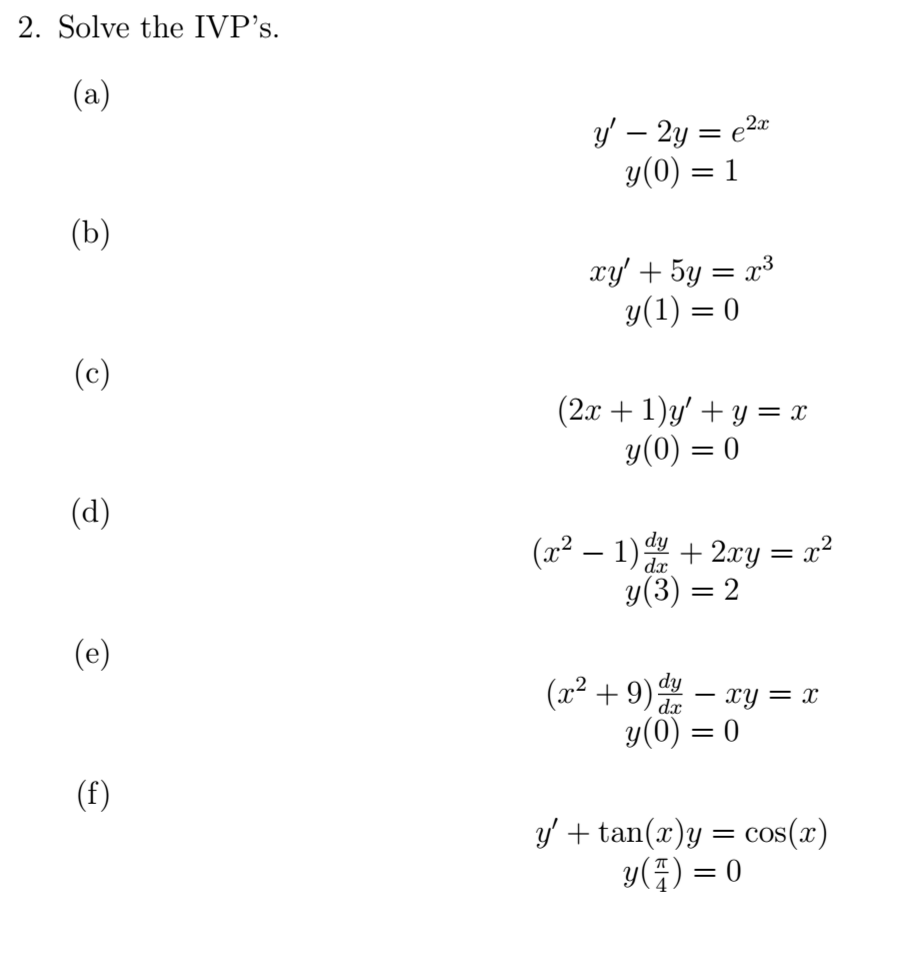



Solve The Ivp S Y 2y E 2x Y 0 1 Xy 5y Chegg Com



Pmt Physicsandmathstutor Com Download Maths A Level C4 Topic Qs Edexcel Set 1 C4 differentiation implicit differentiation Pdf
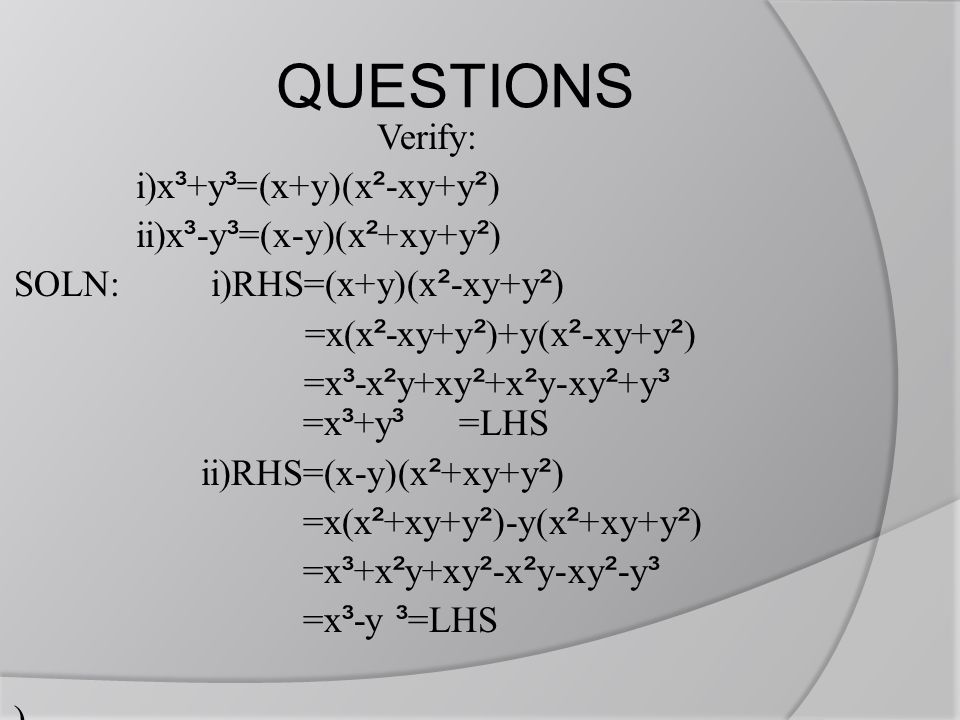



Polynomials Ppt Video Online Download




A For X 2 And Y 3 Verify The Followingx3 Y3 X Y X Xy Y2 Please Give It Fast Brainly In




Ap Calculus Consider Curve Given By Xy 2 X 3 Y 6 Find Dy Dx And Tangent Lines Youtube




Verify X3 Y3 And X3 Y3 Std 9 Maths Ex 2 5 Q 9 Youtube




Consider The Equation X3 Y3 Dx Xy 2 Dy 0 Express This Equation In The Form Dy Dx F X Y G X Y And Solve The Equation Maths Differential Equations Meritnation Com




Y Xy 3 1 X 2 1 2 Y 0 1 Harushley
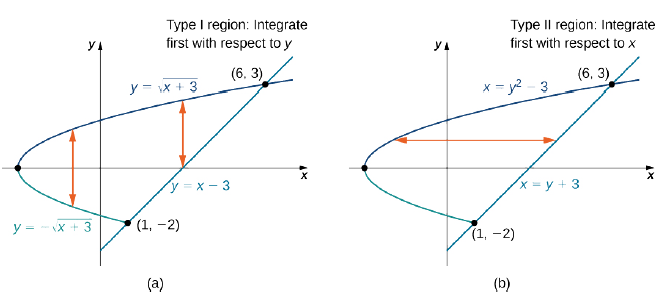



14 2 Double Integrals Over General Regions Mathematics Libretexts
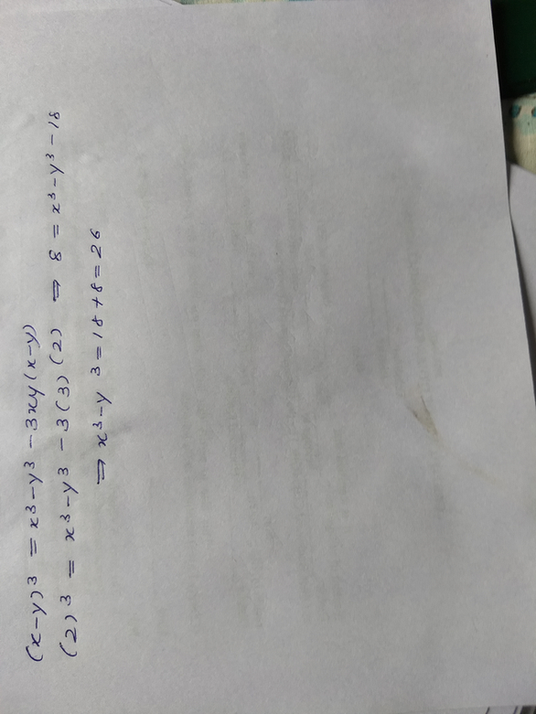



If X Y 2 And Xy 3 Find The Values Of X3 Y3 Scholr



0 件のコメント:
コメントを投稿